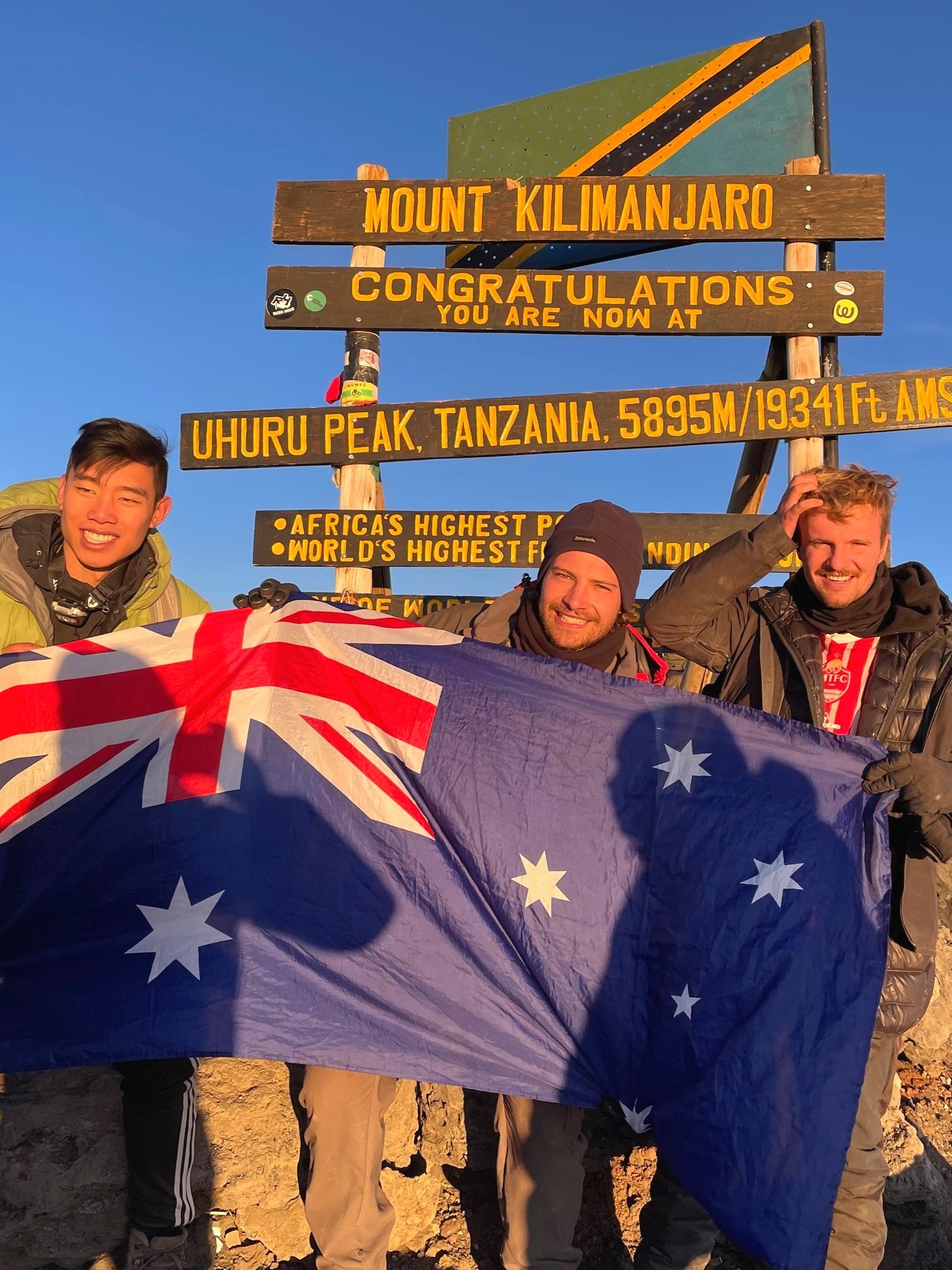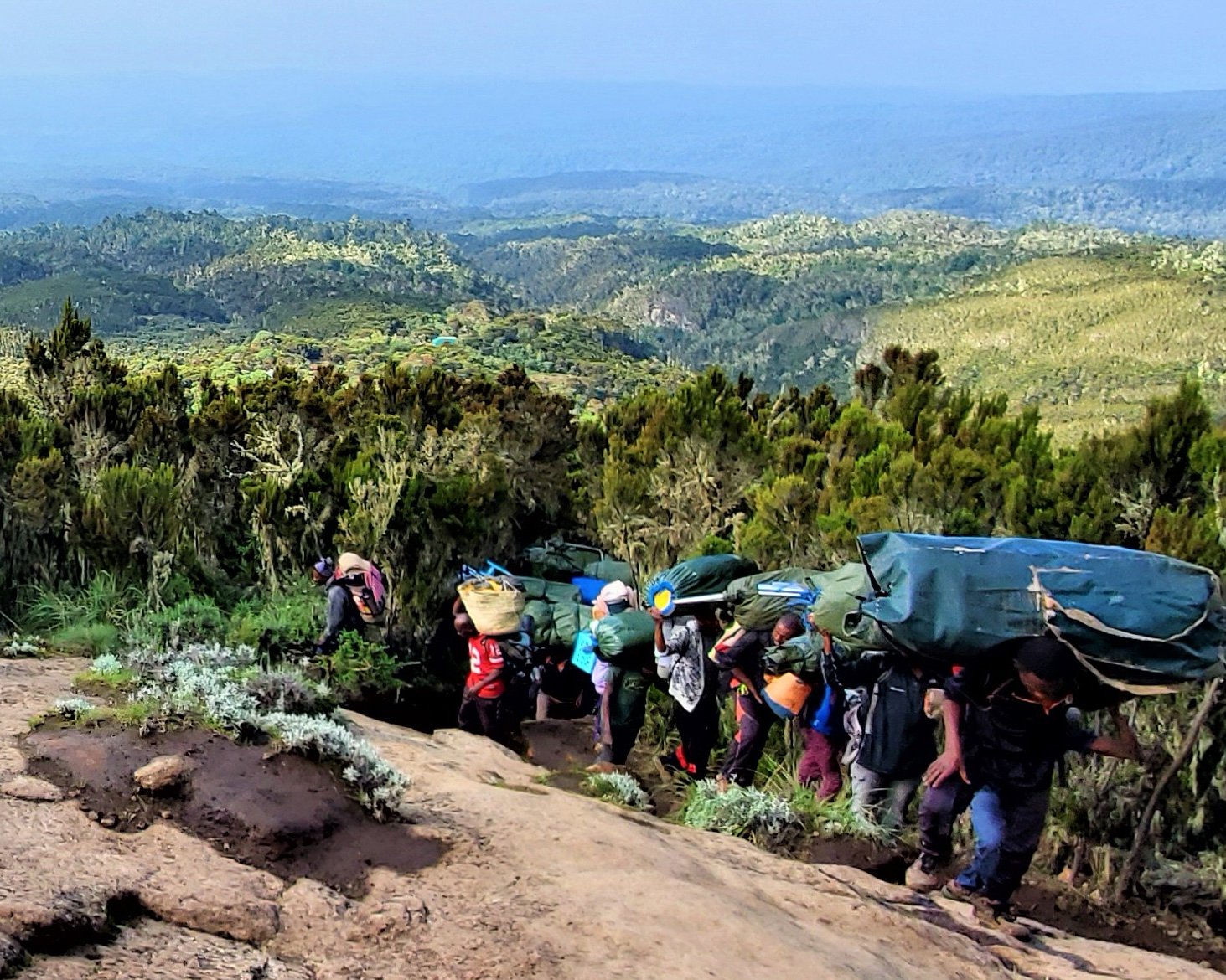Mount Kilimanjaro
Stand on the roof of Africa
Mount Kilimanjaro, located in Tanzania, is the highest mountain in Africa, reaching an elevation of approximately 5,895 metres (19,341 feet) above sea level. Its formation began around 1 million years ago due to volcanic activity. Kilimanjaro is primarily composed of three volcanic cones: Kibo, Mawenzi, and Shira. Kibo, the highest peak, is an an extinct stratovolcano, while Mawenzi and Shira are considered to be eroded remnants of older volcanic activity.
Historically, Kilimanjaro has held significant cultural importance for the local Chaga people, who have lived on its slopes for centuries. They regard the mountain as a sacred entity, intertwining their culture and spirituality with its presence. Furthermore, it serves as a vital resource, providing water, fertile land for agriculture, and materials for crafting.
The first recorded ascent of Kilimanjaro took place in 1889 by Hans Meyer and Ludwig Pössl. Their successful expedition marked the beginning of the mountain's recognition as a climbing destination for adventurers and explorers. Since then, it has gained popularity among trekkers due to its accessibility and the variety of routes available for ascent.
Throughout the 20th century, climbing Kilimanjaro became increasingly commercialised, attracting thousands of climbers each year. This surge in tourism has brought both economic benefits and environmental challenges. The delicate ecosystem of the mountain faces pressures from deforestation, waste management issues, and climate change, which have caused glacial retreat on the summit.
Today, Mount Kilimanjaro stands not only as a natural wonder but also as a symbol of adventure. It continues to draw climbers from around the world, providing them with the opportunity to experience its stunning biodiversity and breathtaking landscapes, while fostering an understanding of the need for conservation efforts to preserve its unique environment for future generations.
Machame Route
Starting from $1,930 Per Person
Marangu Route
Starting from $1,830 Per Person
Lemosho Route
Starting from $2,160 Per Person
Umbwe Route
Starting from $1,865 Per Person
Rongai Route
Starting from $2,230 Per Person
Northern Circuit Route
Starting from $2,680 Per Person
Top 10 things to know before climbing Mount Kilimanjaro
-
Choose the Right Route
Mount Kilimanjaro offers several climbing routes, each with varying difficulty levels and durations. Research the routes, such as the Machame, Lemosho, and Rongai, to select one that aligns with your experience and physical capability.Understand the Altitude
Kilimanjaro is the highest peak in Africa, standing at 5,895 metres (19,341 feet). Acclimatisation is crucial to avoid altitude sickness. Plan for gradual ascent and consider allocating extra time for acclimatisation days.Physical Preparation is Key
A solid fitness regimen is essential for a successful climb. Incorporate cardiovascular training, strength exercises, and practise hikes. Endurance will play a significant role in how well you handle the trek.Pack Wisely
Proper gear is vital for navigating varying weather conditions. Invest in quality trekking shoes, layered clothing, a good sleeping bag, and other essentials like a headlamp, trekking poles, and a hydration system.Stay Hydrated
Dehydration can worsen the effects of altitude sickness. Drink plenty of water before and during your climb. Consider carrying purifying tablets if you need to source water from streams.Nutrition Matters
Fuel your body with balanced meals rich in carbohydrates, proteins, and healthy fats. Snacks like energy bars, nuts, and dried fruit are also recommended for sustained energy during the trek.Listen to Your Body
Pay attention to how you feel during the climb. If you experience severe headaches, nausea, or extreme fatigue, communicate with your guides. Descending is often the best remedy for altitude sickness.Leave No Trace
Protect the environment by practising responsible trekking. Dispose of waste properly, stick to trails, and respect wildlife. This helps preserve the beauty of Kilimanjaro for future climbers.Consider a Guide
While it’s possible to climb Kilimanjaro independently, hiring a local certified guide can enhance your experience. Guides offer valuable expertise in navigation, safety, and cultural insight.Mental Preparedness
Climbing Mount Kilimanjaro is as much a mental challenge as it is a physical one. Stay positive, set achievable goals, and maintain a good attitude throughout the climb to improve your overall experience. -

Omura’s Suggested Packing List
Having the correct gear for climbing a mountain is essential for ensuring safety and enhancing the overall experience. Proper footwear, such as sturdy hiking boots, provides necessary support and traction on varied terrain, while weather-appropriate clothing protects against the elements, keeping climbers warm and dry. Essential equipment, including a helmet, harness, and climbing ropes, can prevent accidents and injuries. Additionally, the right navigation tools and first aid supplies are crucial for responding to unexpected situations in remote environments. Investing in quality gear not only contributes to a successful ascent but also fosters a sense of confidence and preparedness for climbers venturing into challenging landscapes.

















